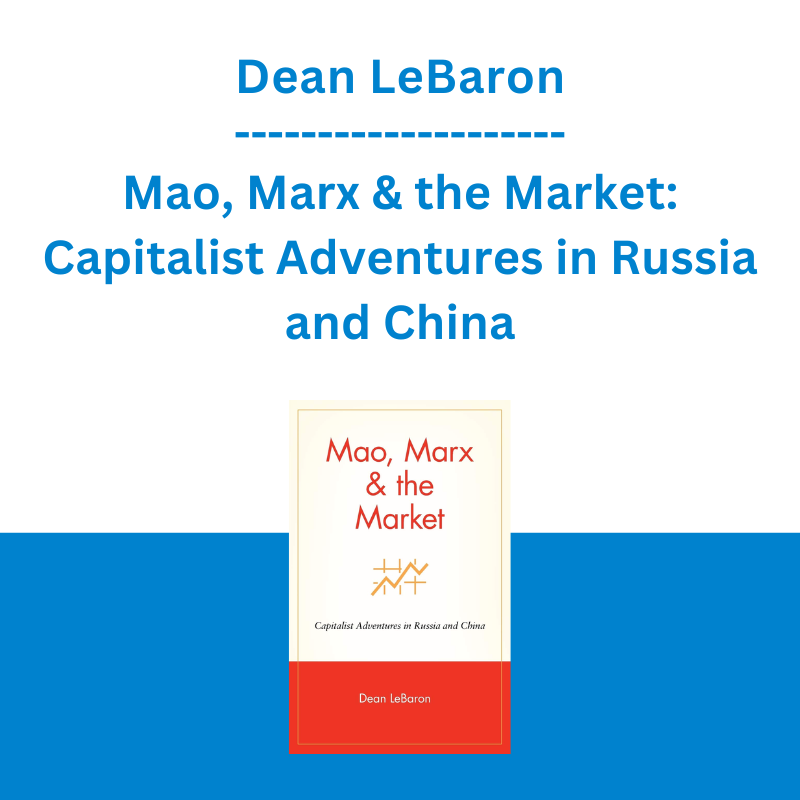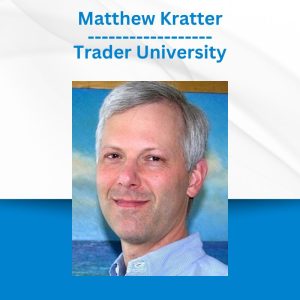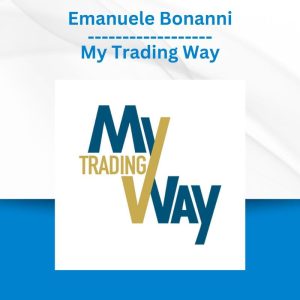*** Proof of Product ***
Exploring the Essential Features of “Dean LeBaron – Mao, Marx & the Market: Capitalist Adventures in Russia and China”
Mao, Marx & the Market: Capitalist Adventures in Russia and China
by Dean LeBaron (Author)
Editorial Reviews
Review
“…a fascinating account…will appeal to people in the financial field as well as those who are not” (M2 Best Books, 25 July 2002)
From the Inside Flap
Mao, Marx & the Market is a unique firsthand account of the precepts, pitfalls, and profits associated with investing in Russia and China as they leap perilously toward a free market economy. In a down-to-earth and engaging style, investment legend Dean LeBaron chronicles his experiences as one of the early institutional investors in Russia and China.LeBarons ventures into two of the largest potential markets in the worldthrough his company Batterymarch Financial Managementcombine practical business advice with important political and cultural lessons. Step by step, youll follow LeBaron in his quest to privatize and modernize state-owned industrial plants in Russia and China. From analyzing companies in these markets to understanding the policies, practices, and attitudes of their governments, youll learn how to conduct business in Russia and Chinawhile using these examples as benchmarks for emerging markets around the world.
This practical guide details LeBarons struggle to create the Soviet Companies Fund in the early nineties when Gorbachev and glasnost ruled. It takes a painful look at what went wrong as the political environment changed and the Russian side reneged on its promises. LeBaron offers candid advice and encouraging warnings as to what to look for in Russia as economic obstacles fall by the wayside and the government becomes comfortable with Western investors.
Turning to China, LeBaron proveswith Batterymarchs Equity Fund of Chinathat investing in emerging markets can be just as profitable as it is risky. Explaining that “post-Mao China took small calculated risks that added up to nothing less than a genuine revolution,” LeBaron provides an intriguing and successful case study for investing in China and other similar emerging markets.
Mao, Marx & the Market prepares you to invest in Russia, China, and beyond, by revealing the “variables” that can play into these markets. It also provides you with a foundation for investing in other emerging markets. Youll learn how to find and invest in emerging markets by studying a country and its economy, then setting specific criteria for each.
The economic futures of Russia and China may not be clear, but the firsthand advice in this book is. Take the knowledge and experience of Dean LeBaron and get a head start in locating and successfully investing in emerging markets. The greatest risk you can take when dealing with emerging markets is not reading Mao, Marx & the Market first.
From the Back Cover
Praise for MAO, MARX & THE MARKET”This is a gripping tale from start to finish, an extraordinary adventure told by a brilliant and idealistic businessman confronted by political disloyalty and chicanery on an epic scale. LeBaron tells his story with a punch, but his basic instincts of morality and decency shine throughout.” —Peter L. Bernstein, President, Peter L. Bernstein, Inc., author of The Power of Gold: The History of an Obsession
“An insight-packed thriller summarizing a brilliant contrarian investor?s adventures in the two great dramas of our era?Russia and China; chock-full of pithy lessons relevant for investors and observers alike.” —Graham Allison, Director, Robert and Renee Belfer Center for Science and International Affairs, John F. Kennedy School of Government, Harvard University
“Dean LeBaron?s book on his adventures in Russia and China is a fun read. I recommend it to anyone taking their first?or second or third?visit to either country for business or pleasure. LeBaron brings out the personal warmth of these countries in terms of their individuals, as well as the obvious complexities of dealing with them.” —David Gill, Board Member of several companies involved with Russia, Retired International Finance Corporation Official
“This is the fascinating story of Dean LeBaron in his quest to participate right from the start in the opening of China and Russia following the demise of their socialist/ communist regimes. It is the best account of what happened in the emerging market world in the nineties.” —Marc Faber, Editor, The Gloom Boom & Doom Report, Managing Director, Marc Faber Limited
“Adventure capitalist Dean LeBaron is the Indiana Jones of finance. Follow his escapades in emerging markets and get an insider?s view of the birth of capitalism in Russia and China. You?ll be amused, entertained, and instructed. Mao, Marx & the Market provides a fascinating insider?s view of the creation of market economies with all their attendant travails. A must read.” —Bill Miller, CFA, Chief Executive Officer, Legg Mason Funds Management, Inc.
About the Author
DEAN LEBARON is an investment futurist. He founded Batterymarch Financial Management in 1969 and led the firm s pioneering advances in the mid-1970s in the application of computer technology and modeling techniques, first in the U.S. market and then in international and emerging markets. He is recognized as one of the first foreign entrants in the nascent securities markets of Brazil, India, Russia, and China.
DONNA CARPENTER is an accomplished and skilled business writer with several books to her name, including The Fall of the House of Hutton and Price Waterhouse Book of Personal Financial Planning.
Chapter One
The Russians Are Coming
I might never have gone to Russia had it not been for two phone calls, one fax, and a submarine.
The first call, in the summer of 1990, was from a friend who led a Boston-based research group called Defense and Disarmament. Together with the Soviet Academy of Sciences, his organization was sponsoring “Swords into Plowshares,” a conference at Harvard University focused on production conversion, military to civilian, in both the United States and the Soviet Union. Would I be interested in addressing that unusual assembly? I would indeed.
Harvard’s venerable red brick buildings and the placid Charles River seemed an appropriate setting for the subject. But I noticed an important disparity. The Soviets sent high-ranking government officials and senior managers of the factories that produced military hardware. The United States was represented by a sprinkling of middle-level managers from military-industrial companies like General Electric and Raytheon. That the American companies attached little importance or urgency to converting from military to civilian production was evidenced by the ranks of their representatives.
In their choice of delegation leader, the Soviets sent a very different signal. Vladimir Koblov was first deputy chairman, and soon to be chairman, of the State Commission on Military Industrial Production of the Council of Ministers of the Union of Soviet Socialist Republics (U.S.S.R.) (the “State Commission”). The United States has no equivalent rank or job, but imagine that all of its defense contractors, from giants Boeing and McDonnell Douglas to the smallest independent contractor, were combined into a single organization supplemented by the Pentagon’s procurement bureaucracy. Someone equivalent to Koblov would be in charge, overseeing thousands of plants and offices, and millions of workers.
At the conference, some American speakers argued against converting military plants, maintaining that it could not be done for several reasons, one of which was that unions would not agree to the necessary changes in job descriptions and pay scales. The Soviet speakers, by contrast, tended to ask: “Why not? If the world wants fewer weapons and more consumer goods, let’s oblige.”
The contrast surprised and appalled me. We Americans were supposedly responsive to markets, but here it was the Soviets showing flexibility. We argued for the status quo; they, for change. The Soviets had not come to Harvard to discuss long-term gross domestic product (GDP) growth; they wanted to know how to turn rifle factories into refrigerator plants now. Perhaps the difference in authority between the two delegations accounted for some of the difference in spirit. As the conference progressed, it became even clearer that the Soviets were top decision makers for their enterprises, whereas the middle-level Americans unquestioningly expressed their companies’ policies.
My own speech suggested two simultaneous initiatives: privatization of Soviet enterprises and the creation of an investment fund that would allow aggressive American, European, and Japanese corporations to buy stakes in the privatized companies. Privatization would give the Soviet economy a shot in the arm, while the fund could pioneer new areas of profit and serve as a model for future investment in the Soviet Union.
Privatization is an old and simple concept, based on the conviction that private investors, rather than the state, should own a country’s factories and farms. Just a few years before, this would have been dangerous even to hint at in the Soviet Union. But thanks to the new rules of Mikhail Gorbachev’s administration, it was suddenly possible. Under privatization, Soviet workers who became part owners of enterprises would have a stake in their own productivity. In this way they would gain something tangible from the abandonment of communism. They would see that the transformation to free market capitalism would benefit the great majority of people, unlike the old system that primarily served the Communist Party and the state.
However, I cautioned, while the concept of privatization was simple, its execution would be devilishly difficult. A few precedents existed for privatizing an entire state-owned economy, but none large enough to be a model for the Soviet Union. When East Germany privatized its much smaller economy in 1990, it was able to adopt West Germany’s laws and economic structures. Even so, it was-and remains-a Herculean task for the Germans. By contrast, the Soviet Union would be privatizing almost from scratch, and without an established economic power like West Germany to act as a parent in times of crisis.
Privatization would involve far more than declaring that workers are now plant owners. They might have all the job skills in the world, but Soviet workers had no financial capital. If enterprises were to modernize and expand, if their managers were to learn the techniques of marketing and international trade, the country would need to enact laws permitting enterprise ownership by other investors, too. Only foreign investors could contribute both the hard currency that privatization demanded and the business expertise necessary for recently emancipated companies to stand on their own and compete in a free market. The country needed to create a legal framework in which foreign investors, individual and corporate, could feel comfortable.
The next morning my office telephone rang. It was Vladimir Koblov, who asked if I could meet individually with each member of the Soviet delegation later that day. My plan had apparently struck a responsive chord. They said it offered a more focused, specific vision than any other they had heard, and they wanted to hear more.
Desperate to stave off an economic free fall, the Soviets wanted all the help I could provide. I cleared my calendar and spent the afternoon in individual 15-minute sessions, answering questions on my investment fund proposal, about Batterymarch, and about how to create an environment attractive to foreign capital.
The next evening the entire Soviet delegation met at my home for further discussion. One of my guests, a burly, square-faced, dark-haired Russian, informed me that he had been in Boston before.
“Oh,” I replied, assuming he had been on a trade mission or something similar. “When was that?”
“About five years ago,” he allowed.
“Where did you stay?” I asked, anticipating the name of a downtown hotel.
“Nowhere,” he answered.
This was not the first time I was puzzled when talking to Soviets, and it would certainly not be the last. My guest grinned. He had “seen the city,” he said, from Boston Harbor-through the periscope of a submarine. “Swords into plowshares” hit close to home at that moment. Soviet submarines, whose nuclear weapons no Star Wars technology could stop, had been lurking in the waters near my home.
The Russians involved in the Plowshares project continued moving fast. Days later, I received a fax from the Soviet government inviting me to the U.S.S.R. to explain my ideas in detail. Before accepting, I again asked myself the hard question: Did I really believe Russia was a place where interesting profits could soon be made? I remembered some remarks by Graham Allison, former dean of Harvard’s John F. Kennedy School of Government and, later, a deputy secretary of defense in the Clinton administration. Given the wealth of natural and human resources in the Soviet Union, Graham told me, it had taken a truly evil genius, Joseph Stalin, to bring the country to its knees economically. For more than 70 years, that huge nation-three times the size of the United States-had experimented with a questionable economic system and failed miserably, squandering its wealth and misusing its human and material resources. Still, that failure, bitter as it was for the Russians, held the promise of a new and better life-where Western capital and experience could be crucial.
I believed the potential of a free market Soviet economy was enormous, if only because of the nation’s size. The country was simply too big to ignore. After China and India, it ranked third in world population, with almost 300 million citizens. Those millions wanted cars, appliances, well-made clothing, and decent housing, which Western companies could supply at affordable prices. If and when the free market revolution took place, the U.S.S.R. would provide a vital market for Western producers, and it offered a rich opportunity for Western investors.
The chronic shortage and shoddiness of Soviet consumer goods did not indicate ineptitude as much as it pointed to a lack of emphasis in these areas. For seven decades, the economy had been driven by concerns of national security, not by the demands of the marketplace. Influencing every economic decision was the Communists’ determination to control all aspects of society. What the Soviets knew how to do, they often did very well. While their advanced weapons represented their expertise in research, technology, and production, precious little of that knowledge and proficiency was used to stock retail shelves.
Likewise, political failure, as opposed to a lack of resources, accounted for the difficulty in feeding Soviet citizens. Prior to its breakup at the end of 1991, arable land composed 11 percent of the country, the same percentage as in China, but the Soviet Union was comprised of more than twice the land mass of China and only a quarter of the population.
Yes, there were spot shortages of fuel and other natural resources, but these, too, can be attributed to organizational shortcomings. The Soviet Union held 40 percent of the world’s reserves of natural gas and almost 6 percent of the oil. (Its annual oil production in the early 1980s had been about one-sixth of the world’s total.) The natural wealth was staggering.
The country also had more timber, coal, iron ore, copper, zinc, nickel, lead, gold, and other precious metals than any other nation in the world. The human talent was also extremely impressive. By any standard, the Soviet labor force was well-educated and highly trained. If early in the century only 10 percent of the population attended high school, by 1959 90 percent of Soviet workers had some high school training, and when Gorbachev came to power, nearly 100 percent had a high school education. By that time, high school attendance and the literacy rate in the Soviet Union were nearly identical to America’s. The drive for educational achievement was growing because, coupled with Party membership, it was the principal route to upward social mobility. Higher education was also expanding. In 1990, 9 percent of the population had college degrees, compared to 2 percent in 1960. The technologically sophisticated defense systems were designed and perfected by one of the world’s largest pools of 1.5 million basic-research scientists and engineers.
I concluded that a partnership with the West could involve many of those scientists and engineers in socially useful research and economically profitable development projects. The task was to identify the technologically advanced parts of the Soviet military establishment that could, after privatization and conversion, compete successfully in the world market. And, furthermore, this had to be done in a society immersed in the process of making the treacherous and unprecedented transition from communism to capitalism. I couldn’t let a challenge of this magnitude slip by.
And so I left for Moscow in September 1990, thanks to two telephone calls, one fax, and a submarine.
Product details
Publisher : Wiley; 1st edition (December 30, 2001)
Language : English
Please see the full list of alternative group-buy courses available here: https://lunacourse.com/shop/










 Racing Workshop - Complete Online Package
Racing Workshop - Complete Online Package  Matan Feldman - The 13-Week Cash Flow Modeling - Wall Street Prep
Matan Feldman - The 13-Week Cash Flow Modeling - Wall Street Prep  Alphashark - The AlphaShark SV-Scalper
Alphashark - The AlphaShark SV-Scalper  Oliver Velez - Essential Strategy Of Trade For Life
Oliver Velez - Essential Strategy Of Trade For Life  Toshko Raychev - Profit System + ITF Assistant
Toshko Raychev - Profit System + ITF Assistant  Emanuele Bonanni - My Trading Way
Emanuele Bonanni - My Trading Way  Chris Capre - Advanced Price Action Ongoing Training & Webinars
Chris Capre - Advanced Price Action Ongoing Training & Webinars  Lynne Me Taggart - The Field Trilogy Masterclass - Lqirim
Lynne Me Taggart - The Field Trilogy Masterclass - Lqirim  Team NFT Money - Ultimate NFT Playbook
Team NFT Money - Ultimate NFT Playbook  Julie Stoian & Cathy Olson - Launch Gorgeous - Funnel Gorgeous Bundle
Julie Stoian & Cathy Olson - Launch Gorgeous - Funnel Gorgeous Bundle  Trade Like Mike - The TLM Playbook 2022
Trade Like Mike - The TLM Playbook 2022  Atlas API Training - API 570 Exam Prep Training Course
Atlas API Training - API 570 Exam Prep Training Course  Sovereign Man Confidential - Renunciation Video
Sovereign Man Confidential - Renunciation Video  George Fontanills & Tom Gentile - Optionetics Wealth Without Worry Course
George Fontanills & Tom Gentile - Optionetics Wealth Without Worry Course